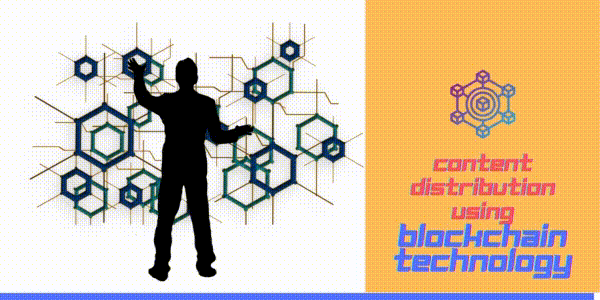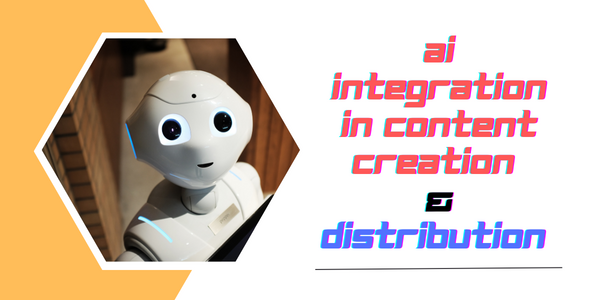Web3 has the potential to revolutionize the way content is created, distributed, and monetized. Using decentralized blockchain technology, Web3 enables secure, censorship-resistant distribution of content and fairer revenue distribution for creators. The emergence of Web3 content platforms is changing the landscape, but adoption faces challenges such as user adoption and technology limitations. Web3 also has the potential to shape the future of content ownership and monetization, impact traditional content distribution giants, address issues such as copyright and moderation through decentralized content governance, and use NFTs in the content ecosystem. Integrating AI and utilizing decentralized data storage solutions could further enhance the content creation and distribution process in a Web3 world.

Web3 promises to change this by enabling creators to distribute their content directly to consumers without the need for intermediaries. This can potentially increase revenue for content creators and give them more control over the distribution and monetization of their work. Web3 technologies like blockchain and decentralized storage solutions provide a secure and tamper-proof way of creating, distributing, and storing content.
In addition, Web3 enables new opportunities for collaborative content creation and allows users to own and control their data, ensuring greater privacy and security. The decentralized web also offers the potential for more equitable access to information, particularly in regions where the internet is censored or controlled by a few corporations. Web3 has the potential to revolutionize the way content is created, distributed, and consumed, providing a more equitable and secure internet experience for all.
Learning Objectives
This article was published as a part of the Data Science Blogathon.
Web3 refers to the next generation of the Internet, which aims to provide a decentralized, secure, and more equitable online experience. Web3 is built on decentralized technologies such as blockchain and peer-to-peer networks, eliminating the need for intermediaries and giving users greater control over their online data and activities.
Web3 technology has the potential to revolutionize various industries, including finance, media, and social networks, by enabling the creation of decentralized platforms that are secure, transparent, and more equitable. The goal of Web3 is to create a more decentralized, user-centric Internet, where users have greater control over their data, privacy, and financial transactions.
Secure, decentralized content distribution using blockchain technology refers to a method of distributing digital content without the need for intermediaries such as centralized platforms. This is achieved through the use of blockchain, which provides a secure and tamper-proof way of storing and sharing data.
With this approach, content creators can distribute their work directly to consumers without going through a third-party platform. The content is stored on a decentralized network of computers, making it much more difficult to censor or manipulate. The use of smart contracts on the blockchain also allows for automatic and transparent monetization of the content, reducing the need for intermediaries to take a cut of the revenue.

Blockchain technology provides a secure and decentralized way of distributing digital content, empowering content creators to take control of their work and enabling users to access and consume content more confidentially and securely.
The emergence of Web3 content platforms is changing the landscape of digital content creation and distribution. Web3 platforms are decentralized, using blockchain technology to create a secure, transparent, and equitable environment for content creators and consumers.
These platforms allow content creators to distribute their work directly to consumers without intermediaries. This results in a fairer revenue distribution, as content creators receive a larger share of the revenue generated. The decentralized nature of Web3 also ensures censorship resistance, promoting free speech and open communication.

Web3 platforms also offer new opportunities for collaboration and peer-to-peer interactions, enabling users to interact and engage with content in new and innovative ways. With the growing popularity of Web3, these platforms are poised to disrupt traditional centralized content platforms, providing a more open and equitable internet experience for all.
The emergence of Web3 content platforms marks a major shift in the landscape of digital content creation and distribution. By offering secure, decentralized, and fairer revenue distribution, these platforms are changing how content is created, distributed, and consumed, promoting a more open and equitable internet experience for all.
The adoption of Web3 content platforms, although offering many benefits, faces several challenges that must be overcome to become widely adopted. These challenges can be broadly categorized as challenges of adoption, user adoption, and technology limitations.
Challenges of Adoption: The decentralization of Web3 content platforms challenges the traditional centralized content creation and distribution model. This means that the adoption of Web3 will require a significant shift in how the internet operates, which may not be easily achieved. Additionally, there are also regulatory challenges to the adoption of Web3, as governments and other organizations may be hesitant to embrace a technology that is decentralized and difficult to control.
User Adoption: Another challenge to adopting Web3 content platforms is user adoption. Many users are still unfamiliar with the concept of Web3 and its benefits and may be hesitant to adopt a new technology they are unfamiliar with. Additionally, Web3 platforms may face competition from established centralized content platforms, which have a large user base and established brand recognition.
Technology Limitations: Web3 is still a relatively new and rapidly evolving technology; as such, there may be technical hurdles to overcome that could limit its widespread adoption. For example, scalability issues may arise as more users adopt Web3 platforms, leading to slower speeds and longer wait times for content to load. Additionally, the complex nature of blockchain technology may also present challenges for users who are not technically savvy.
The challenges to adopting Web3 content platforms are significant but not insurmountable. Overcoming these challenges will require a greater understanding and awareness of the benefits of Web3 among users and organizations, as well as the development of new technologies to overcome technical limitations. Additionally, the benefits of Web3, such as fairer revenue distribution and censorship resistance, are likely to drive its adoption in the long term.
In the Web3 era, the future of content monetization and ownership is expected to be much more equitable and transparent compared to traditional models. With the decentralization of content distribution through blockchain technology, intermediaries such as YouTube, Netflix, and Spotify will no longer be necessary, allowing content creators to connect directly with consumers and receive a larger share of the revenue generated.
Moreover, Web3 also enables the creation of new revenue streams, such as micropayments and peer-to-peer transactions, which can provide additional sources of income for content creators. The decentralized nature of Web3 also ensures that digital content ownership is more secure, transparent, and easily transferable, which can provide a new level of protection for creators and consumers alike.
The future of content monetization and ownership in the Web3 era can greatly benefit content creators and consumers, providing a fairer, more equitable, and more transparent model for creating and distributing digital content.
The impact of Web3 on traditional content giants such as YouTube, Netflix, and Spotify is likely to be significant. As Web3 enables the creation of decentralized content platforms that eliminate the need for intermediaries, these traditional content giants may face competition from new decentralized alternatives.
Additionally, the emergence of Web3 also has the potential to disrupt the current revenue model of these traditional content giants, who often take a significant percentage of revenue generated from content creators. With Web3, content creators can connect directly with consumers and receive a larger share of the revenue generated, which may lead to a decrease in the revenue and market share of these traditional content giants.

However, it’s worth noting that the transition to Web3 will likely be a slow process. It remains to be seen how traditional content giants will respond to the challenge of decentralized alternatives. They may embrace Web3 technology and integrate it into their existing business models or resist the change and double down on their traditional centralized business models. The impact of Web3 on traditional content giants is likely to be significant, but the exact nature and extent of that impact remain to be seen.
The impact of Web3 technology on traditional content giants like YouTube, Netflix, and Spotify can be described as follows:
In short, the impact of Web3 technology on traditional content giants is that it gives content creators more control over their content and revenue, reducing the power of intermediaries and creating a more democratic and transparent model for content creation and distribution.
Decentralized content governance, enabled by Web3 technology, offers a new approach to addressing issues of copyright and moderation. In a decentralized content platform, content ownership and copyright can be easily managed and protected through the use of blockchain technology, which allows for transparent and secure tracking of content ownership and distribution.
In terms of moderation, decentralized content platforms can use decentralized autonomous organizations (DAOs) to govern the platform and enforce community standards. DAOs are run by a decentralized group of users, who can vote on and enforce rules and regulations, allowing for a more democratic and transparent approach to moderation.
However, implementing decentralized content governance also presents new challenges, such as the difficulty of enforcing rules and regulations in a decentralized environment and the potential for spreading harmful or illegal content. Developing new technologies and approaches to decentralized content governance will be necessary to address these challenges.
Decentralized content governance offers a new approach to addressing issues of copyright and moderation, with the potential to provide more equitable and transparent solutions compared to traditional centralized models. However, the challenges of implementing this approach will also need to be addressed to ensure its success.
The integration of AI in content creation and distribution has the potential to bring significant advancements in the field. AI can automate various content creation and distribution tasks, such as image and video processing, natural language processing, and recommendation systems, allowing for more efficient and effective content creation and distribution.
In terms of content creation, AI can assist content creators by generating new content, such as text or visual content, or by improving existing content through the use of tools such as image and video editing software. In terms of distribution, AI can be used to personalize the content experience for individual users by providing recommendations based on their interests and preferences.

However, the integration of AI also presents new challenges, such as the potential for spreading fake or misleading content and ethical and privacy concerns surrounding the use of AI in content creation and distribution.
The integration of AI in content creation and distribution has the potential to bring significant advancements. Still, it will also require careful consideration of the challenges it presents and the development of new technologies and approaches to ensure that the use of AI in content creation and distribution is responsible, ethical, and secure. (5 Real-World Examples of How AI is Transforming Web3)
Web3 represents a significant shift in how the Internet operates, providing a more decentralized, secure, and equitable online experience. Integrating Web3 technology into content creation and distribution can revolutionize the media industry by enabling the creation of more democratic and transparent content platforms. The integration of AI into content creation and distribution has the potential to bring significant advancements but also presents new challenges that need to be addressed. The future of content monetization and ownership in the Web3 era holds great potential for content creators and consumers. However, implementing Web3 technology and its applications also requires careful consideration of potential challenges and the development of new technologies and approaches to ensure responsible and secure use.
The key takeaways from this article are:
The media shown in this article is not owned by Analytics Vidhya and is used at the Author’s discretion.
Lorem ipsum dolor sit amet, consectetur adipiscing elit,